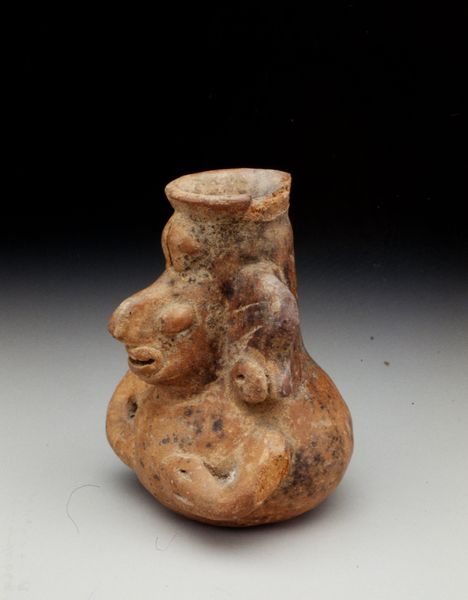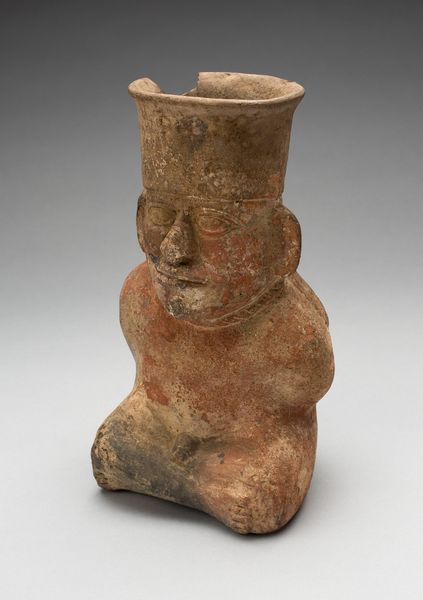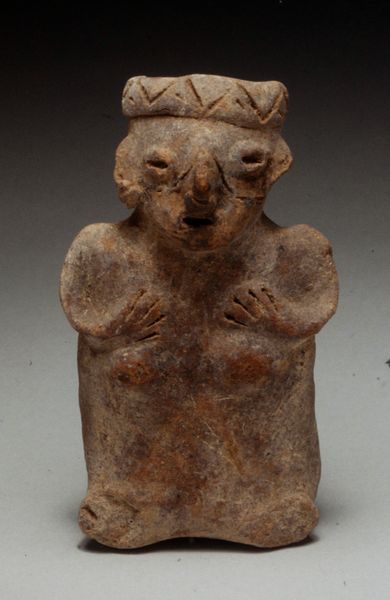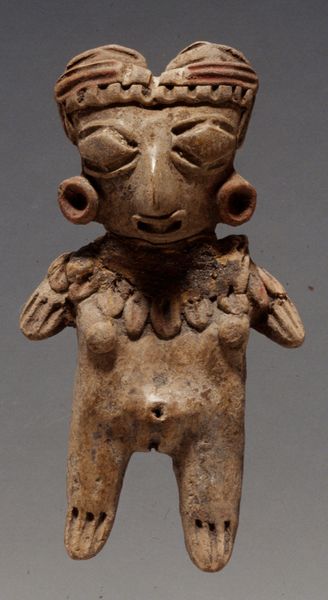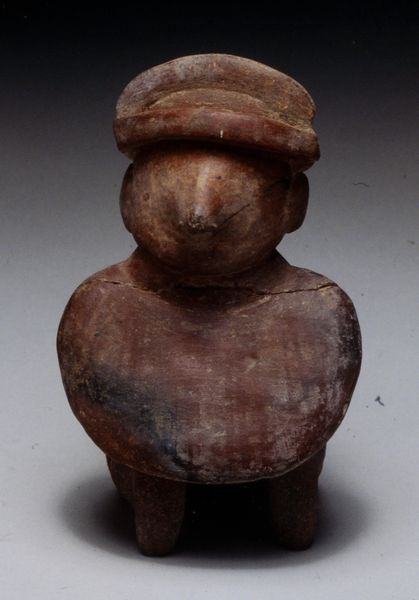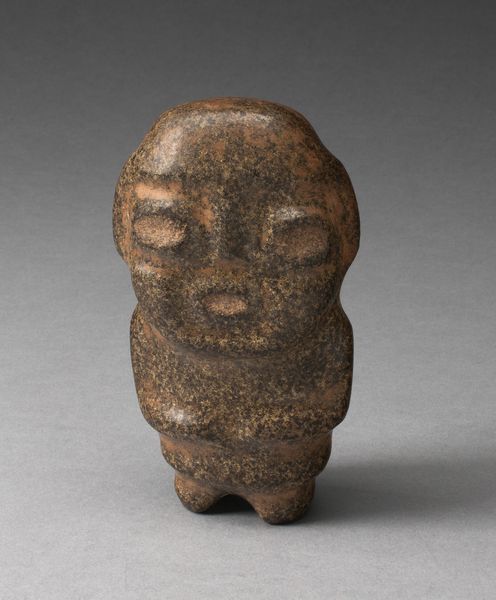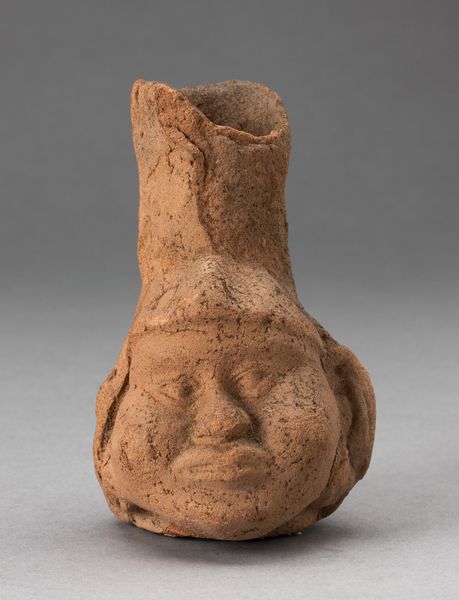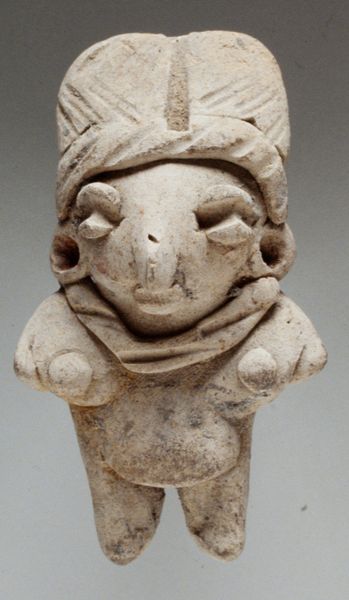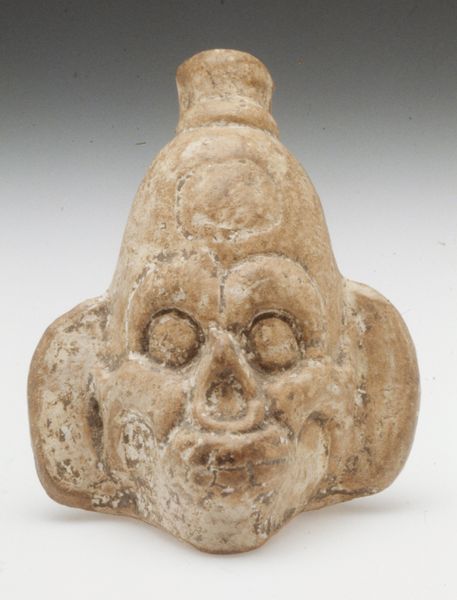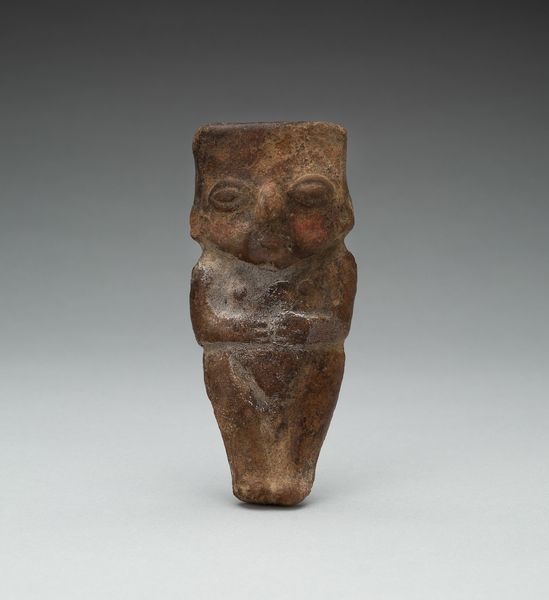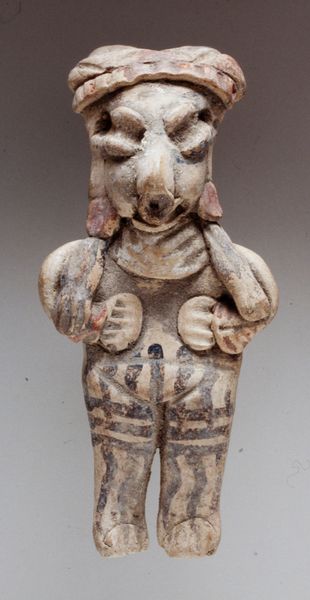
ceramic, earthenware, sculpture
#
sculpture
#
ceramic
#
figuration
#
earthenware
#
sculpture
#
indigenous-americas
Dimensions: 3 1/2 x 2 3/4 x 2 3/4 in. (8.9 x 7.0 x 7.0 cm)
Copyright: Public Domain
Editor: Here we have the Chupícuaro "Human Effigy Bowl" from around 250-300 CE, crafted from ceramic. I’m immediately drawn to the rawness of the material; it feels so earthy and handmade. What stands out to you? Curator: Well, the piece invites us to consider the entire production process, doesn't it? The fact that this object is earthenware is quite telling. Earthenware's porous nature and relatively low firing temperature would have made it accessible to most ancient people. Given the labor and social context surrounding ceramic production during this period, can we even cleanly differentiate “high art” from mere utility? Editor: That's an interesting way to put it! So you're saying that because earthenware was commonly available, this bowl’s artistic value is rooted more in its creation than in its inherent preciousness? Curator: Precisely! Consider the social dynamics within the Chupícuaro culture: Who gathered the clay? Who shaped the effigy, and with what tools? Was it a communal activity, or the work of a specialist? Furthermore, how would it have been consumed, both literally and figuratively? These details matter just as much as aesthetic considerations when determining significance. Editor: I never really considered how materials themselves embed a whole social narrative. So much to learn! Curator: Exactly! We can see the intersection of skill, labor, and available resources embedded directly within the artwork itself. Hopefully, this material perspective will inspire future considerations.
Comments
No comments
Be the first to comment and join the conversation on the ultimate creative platform.
